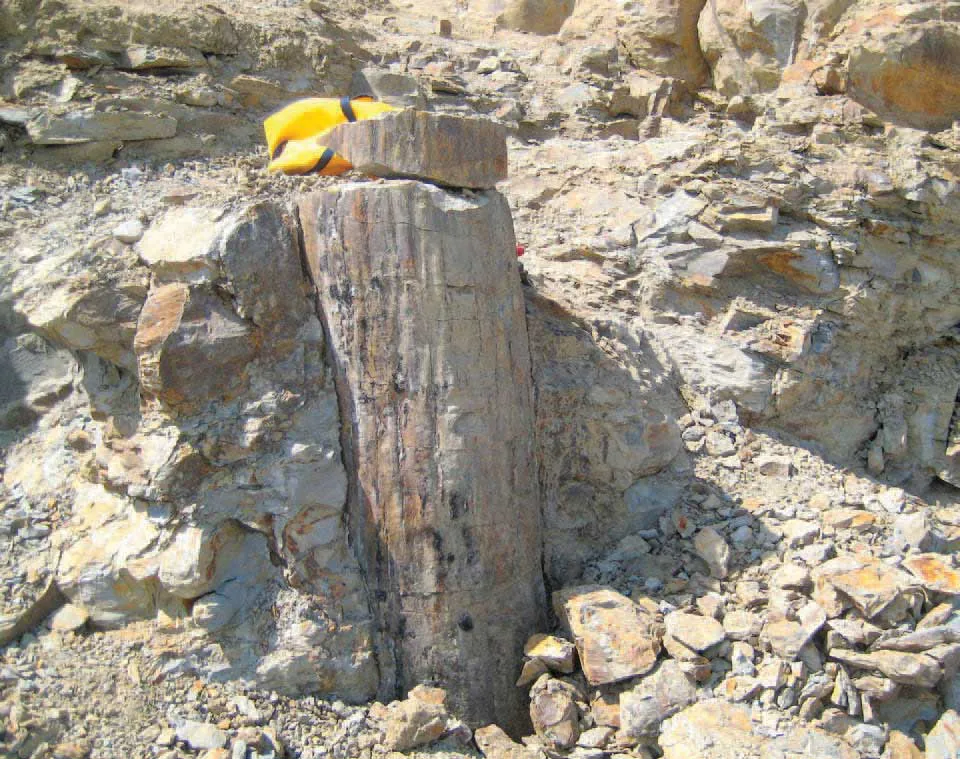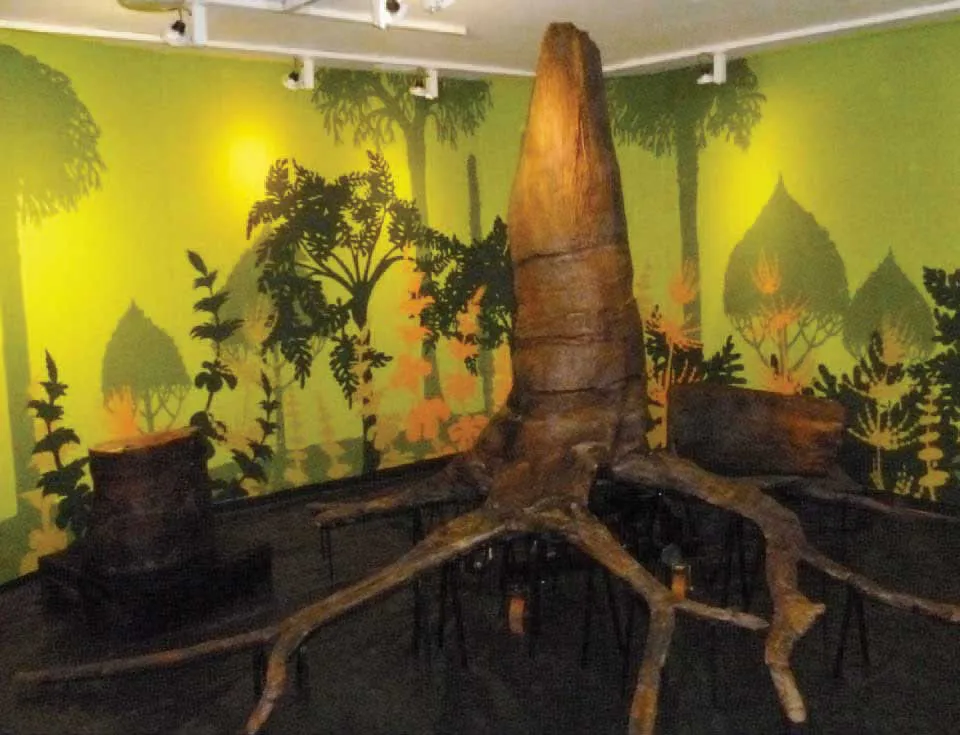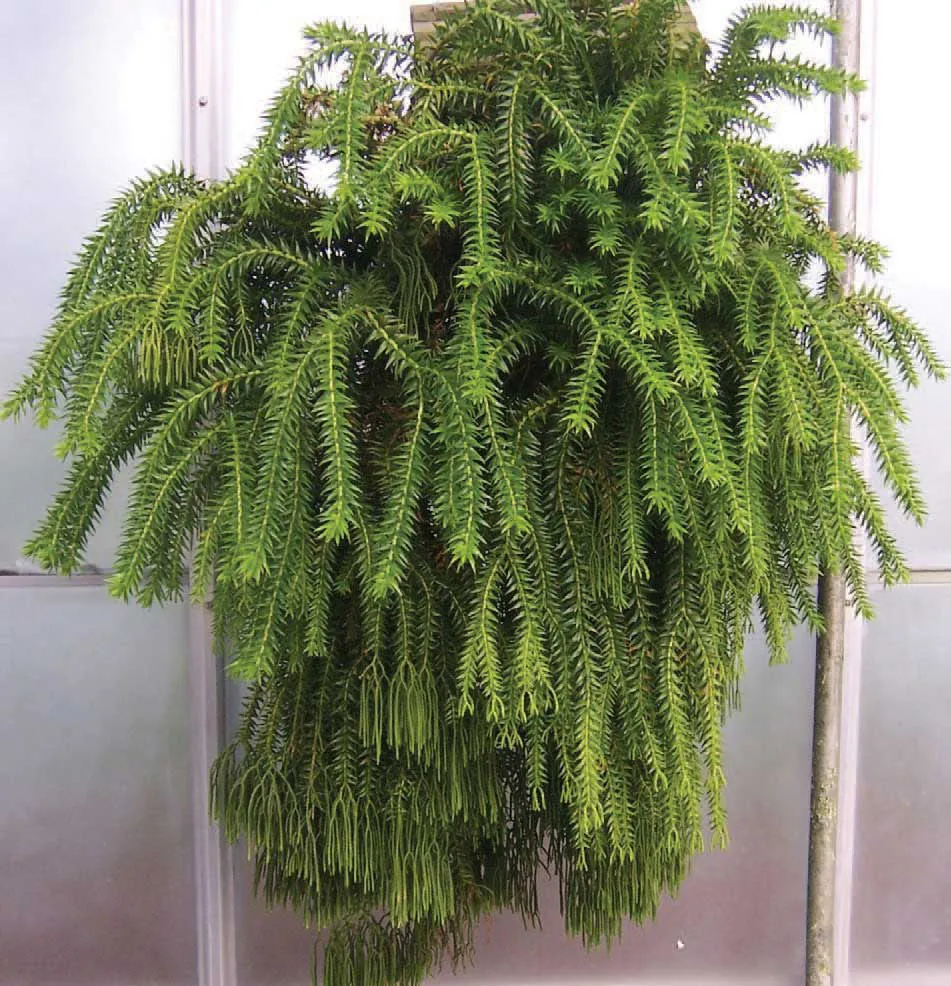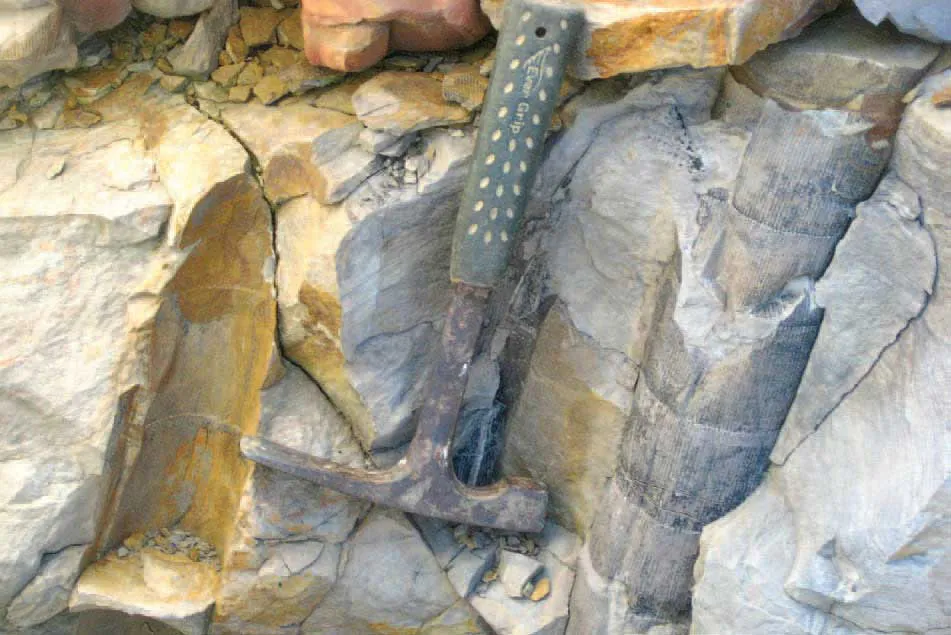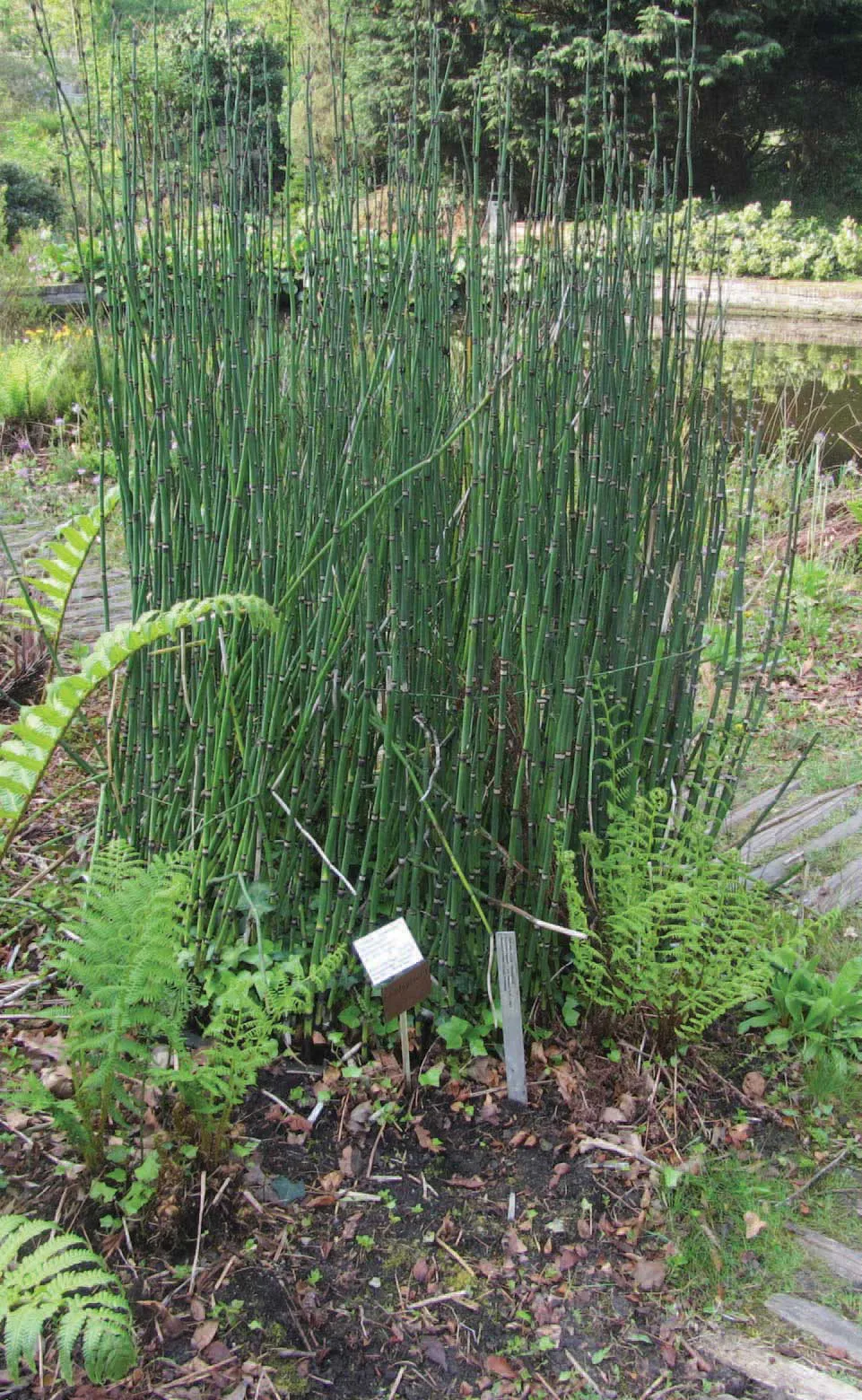![]()
CHAPTER 1
HISTORY OF FERNS AND FERN GROWING
In the Beginning – Ferns and Related Fossils
The history of ferns begins many millions of years ago. Some genera, e.g. Marattia and Dipteris, which thrive in tropical areas today, can be traced back through fossil evidence dating from over 250 million years ago. Actual fern fossils such as these are not woody.
Marattia howeana, a tropical species, endemic on Lord Howe Island between Australia and New Zealand. A surviving species of related fossils dating back to the Palaeozoic period, around 300 million years ago.
Dipteris chinensis in tropical China. Closely related to fossils 230 million years old.
Lycopophytes
The most remarkable fossils found today are sections of trunk of tree lycophytes, usually a species of Lepidodendron. For many years they were thought of as fern allies, but modern DNA analysis has shown they are not closely related to ferns, hence the term ‘fern ally’ has been dropped. These plants are now collectively known as lycophytes. A 1m-tall remnant of a lepidodendron is still in position where it had been growing at the former site of the steelworks at Brymbo in North Wales.
Also from Brymbo is an assemblage of genuine fossils, excavated from the rock. It shows what the base of a Carboniferous arborescent lycopod looked like. This is a rebuilding of the fossils from the site, not a plastic replica! The top was not lost in excavation; it would have rotted away about 350 million years ago.
The base of a trunked lycophyte, possibly a lepidodendron, in situ at the site of a former steelworks at Brymbo, near Wrexham in North Wales. The section visible is about one metre tall.
Another discovery in the British Isles that fascinated me was made in Glasgow, Scotland. In Victoria Park (a public park full of football pitches and the like in the heart of Glasgow) there is a central rocky outcrop, which was to be turned into a rockery. During excavation the remnants of a lycophyte forest were discovered. Happily, the development plans were abandoned, the fossils were left in situ and a building was constructed to preserve them – a wonderful example of Victorian geo-conservation in 1887. Any visitor to the park can enter the building and enjoy this amazing sight. Notice how the trunks of these huge plants (that would have been about 45 metres tall) were supported by dichotomizing root structures that gave the plants stability. This was added to by a mass of finer roots.
None of these fossils are of species extant today, but relatives do still exist, mainly as Lycopodium species (common name: clubmosses). There are probably more than 100 clubmosses extant worldwide but none are trunked; all are herbaceous. Three true Lycopodium species and three related species are native to Britain, and there are more hardy species in Europe and North America. Most have a creeping habit and are rarely over 15cm tall. All are winter green and beautiful – but cultivation is probably impossible as after a year or two they dwindle. All are calcifuge.
Arborescent lycopod, surviving trunk about 2m tall. The original plant probably stood about 7–8 metres tall. (Photo: Barry Thomas)
Inside the building built to protect the trunk bases of lepidodendons in Victoria Park, Glasgow. Imagine the dinosaurs walking through here about 150 million years later!
Newly discovered in Britain, Lycopodium lagopus near the summit of a Scottish mountain at 900m. The much commoner, Lycopodium clavatum, differs by having two or more sporing tips (strobili) to the stems.
Lycopodium sp., probably Lycopodium phlegmaria under glass at Longwood Gardens, Pennsylvania, USA. A native to the South Pacific.
There are many more species native to the tropics, often pendulous as epiphytes. Many botanic gardens do succeed in growing these in sheltered environments, as at Longwood Gardens, Pennsylvania, USA.
Horsetails
Fossils of giant horsetails are not uncommon. They are usually in the genus Calamites, which is extinct today, but modern-day horsetails, in the genus Equisetum, are all too common. Horsetails are easy to cultivate and – unlike Lycopodium – are genuine ferns. I do not recommend growing them, however, as they spread rapidly where you probably do not want them!
Calamites in nature would have grown to 20m or taller. Most horsetails today are rarely taller than 1m. One species is quite widely grown, Equisetum hyemale var. affine. It is handsome, hardy and winter green, but unless you want several square metres of it in ten or twenty years, I would leave it alone.
A stem of Calamites also in situ at Brymbo, both visible sections are approximately 1m tall.
Equisetum hyemale var. affine at Leiden Botanic Gardens. Skilfully kept from spreading.
Genuine trunked fossils of true ferns do exist, mainly in America. In Europe most trunked examples are lycopods, but fossils of non-woody parts of ferns do exist quite widely in Britain as frond fragments.
One keen lover of horsetails tried growing them inside concrete enclosures – but they escaped. He also discovered that a second species had grown beneath his bungalow and come out the other side.
Fern Growing
Evidence for cultivation of ferns as ornamental plants in the fifteenth, sixteenth and seventeenth centuries is sparse. Interest in plants during this time, and probably earlier, was largely medicinal. Herbals often mentioned ferns, and generic names sometimes reflected their herbal value; for example, Asplenium and ‘spleen’ is an obvious connection. (Whether or not aspleniums were actually good for the spleen is another matter.) Some cultivars were noted, e.g. Polypodium cambricum ‘Cambrian’ (1668) and Asplenium scolopendrium ‘Cristatum’ (1581), but not particularly for garden ornament.
In the first British fern book, Filices Britannicae (1785), the author James Bolton does give evidence of some ornamental interest and even illustrated and described some cultivars (varieties back then). On page xiii of his introduction, he notes:
Many of the ferns might with great propriety be introduced into our botanic gardens; not merely with a view to increase the number of plants in these gardens, but also on account of the agreeable contrast they produce when interspersed amongst plants of all the other classes….
How true this is today. In An Analysis of British Ferns (1837), G.W. Francis listed more wild cultivars than Bolton, but comments on cultivation were few. The aim was perhaps to steer the reader towards collecting for an album or herbarium. Du...



